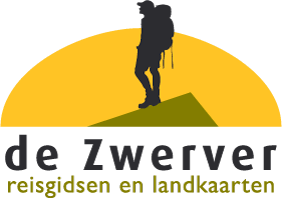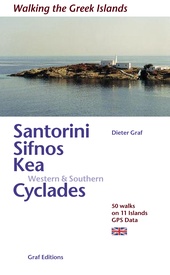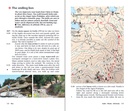Wandelen op de Griekse Eilanden met deze klein formaat Engelstalige wandelgids Anafi, Folegandros, Ios, Kea, Kimolos, Kithnos, Milos, Santorini, Thirassia, Serifos, Sifnos, Sikinos, bij elke uitgebreid beschreven dagwandeltocht is een gedetailleerde routekaart afgebeeld en foto's ter orientering van de moeilijke, verwarrende trajecten.
This book describes the loveliest old walking trails. With precise descriptions, detailed maps, exact times, GPS points and photos of outstanding places for better orientation. And lots of useful knowledge about the "Islands of Light." It is made for island hoppers who want to drift through the island world by ship and who would also like to hike and swim in this ancient cultural landscape.
The concept „Greek Islands“ conjures up images of white cubical houses twined around with red bougainvillea, unevenly paved alleys below bright blue church domes, dilapidated windmills on top of stormy mountain ridges, shady groves with old gnarled olive trees. The Cyclades fit this picture perfectly. The name of this group of islands is derived from the classical Greek word kyklos, meaning “circle”. The ancient Greeks believed that the islands were gathered in a circle round the holy island of Délos.
The western and southern Cyclades described in this book used to be classed with the Sporades, the “scattered islands”, but nowadays they are considered part of the Cyclades on account of their many common features in terms of history and culture.
Cycladic culture in the early Bronze Age was the first very advanced civilisation in Europe. During the subsequent classical period the first stone temples were also built here. One of the aims of this book is to discover these on walks. Along the trails described here are old Byzantine fortified monasteries as well as tightly clustered villages and long since deserted, solitary farmhouses. Readers are also led to long sandy beaches and concealed rocky bays which can only be reached on foot.
The Cyclades offer a wonderful, tranquil landscape. Even the barrenness has a peculiar charm. While the walker may miss the forests, his eye is rewarded with distant views of the blue sea from almost every point along the way. Moreover, his nose is tickled by the sweet smells of the Mediterranean kitchen herbs which thrive everywhere. In the villages, finally, his heart warms to the filoxénia, the generous hospitality of the Greeks which makes one forget that one is a foreigner.
The islands are still criss-crossed by many of the old mule tracks, which connect the traditional settlements and now frequently abandoned monasteries. Fences are rare, too, so trekkers are more or less free to roam wherever they want. Although each of the islands has its own specific characterisitcs, Sífnos and Kéa are particularly suitable for walking, closely followed by Síkinos and Sérifos. But each trekker can decide that for himself; sooner or later everyone finds his or her “favourite” island. Have a good trip! Kaló taxídi!












